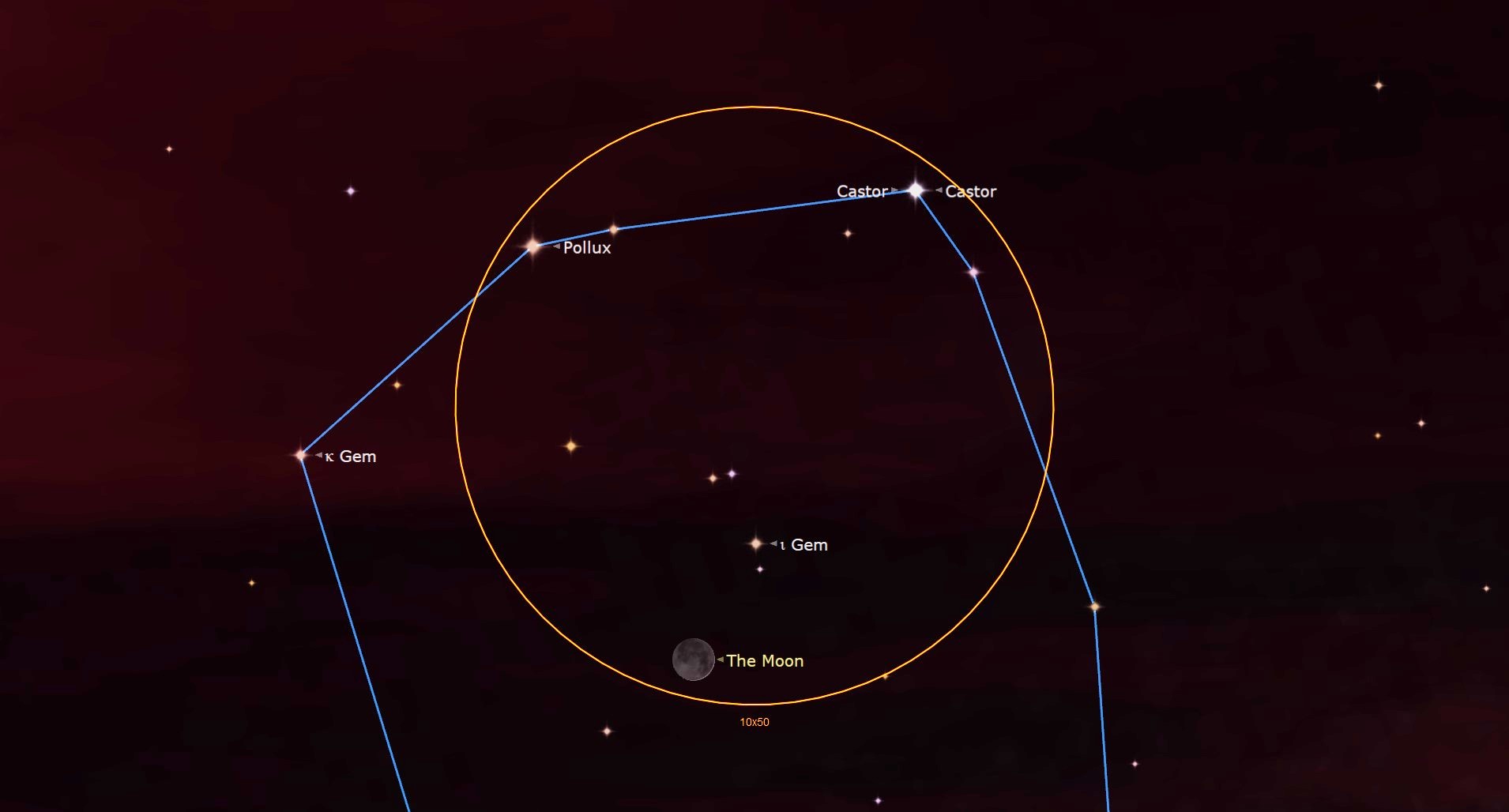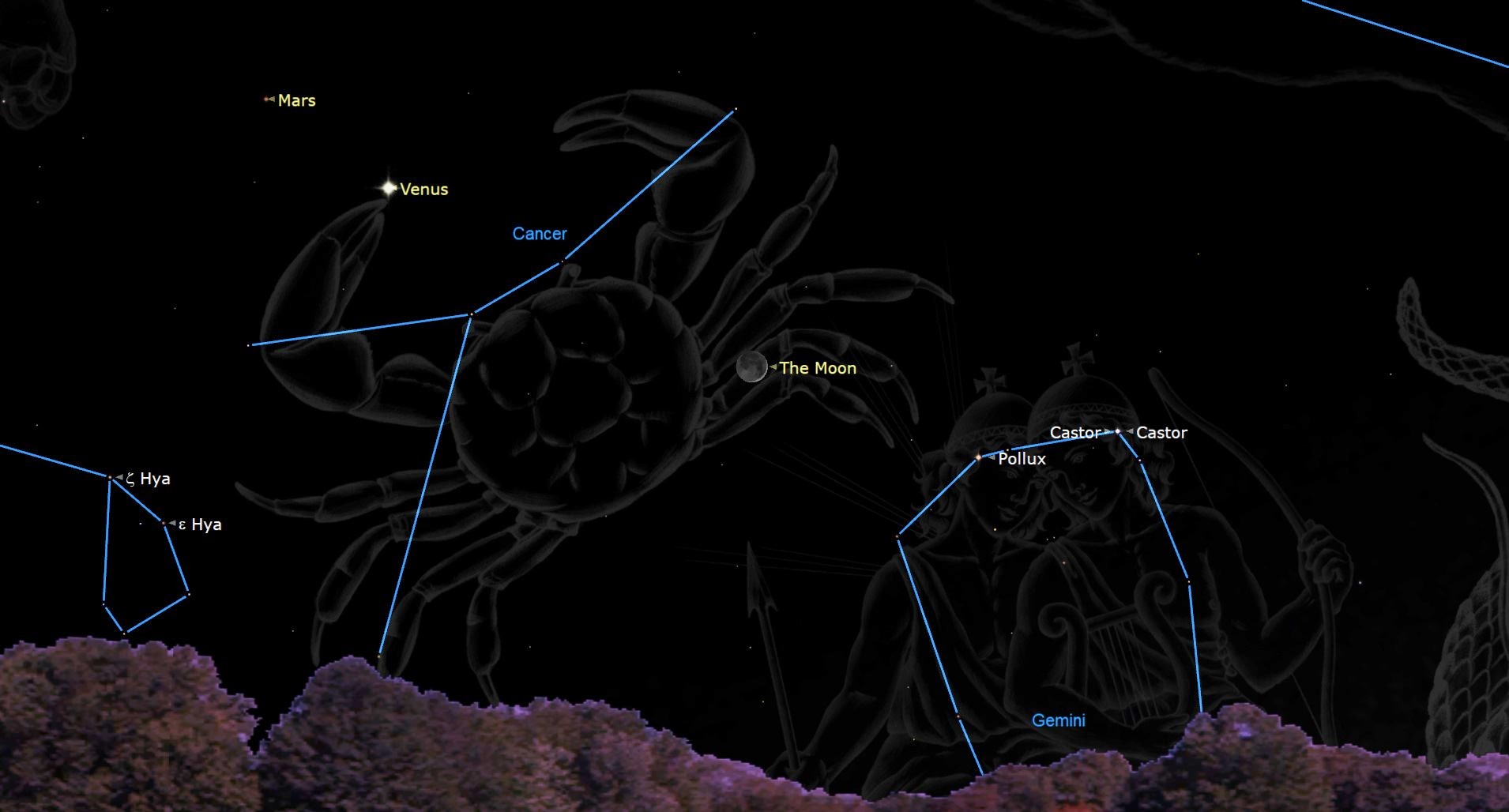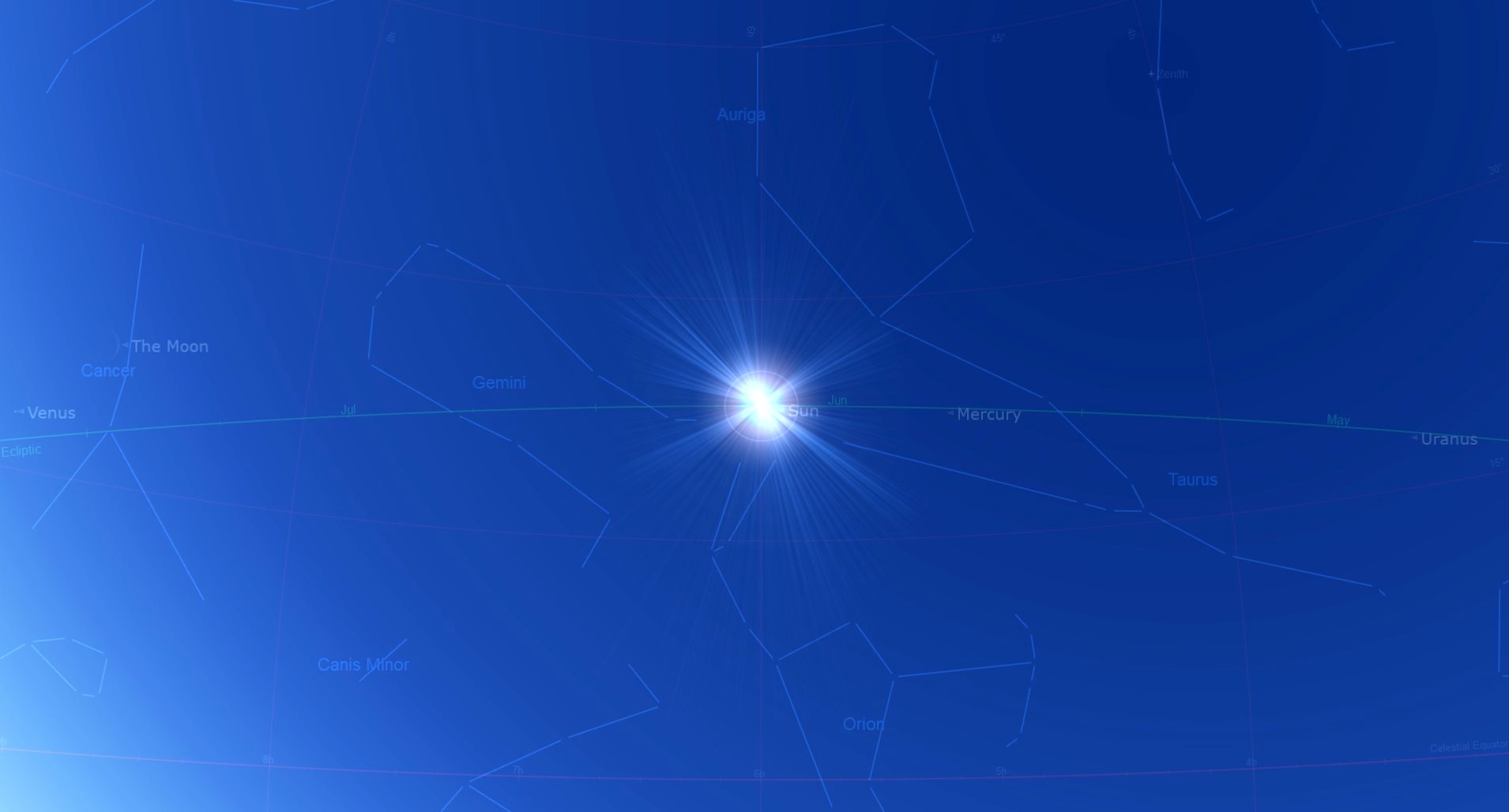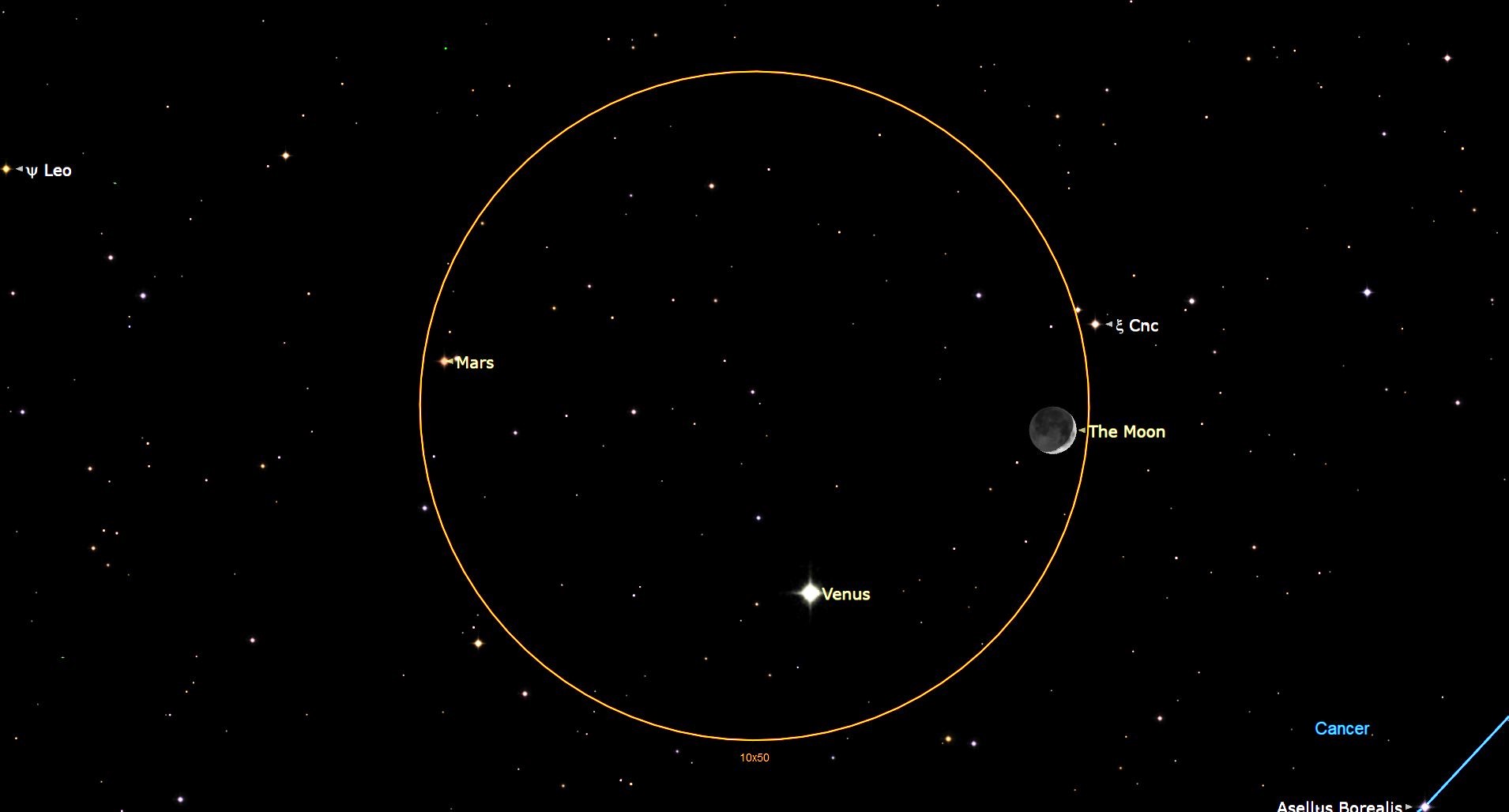The moon, Venus, Mars and bright stars shine in a summer celestial gathering this week. Here's how to see it.
Last month, we called attention to a celestial assembly involving the moon, two bright stars and two bright planets adorning our western evening sky.
Now, another, similar gathering will take place this week; an array that will change night to night as we transition from the spring into the summer season with the summer solstice on June 21. Here's a look at the how the stars of Gemini will shine with the moon, Mars and Venus as summer begins.
Related: The brightest planets in June's night sky (guide)
Monday, June 19: Twin Gemini stars Castor and Pollux

Want to check out Saturn's rings or the craters of the moon? We recommend the Celestron Astro Fi 102 as the top pick in our best beginner's telescope guide.
The week's skywatching feast begins Monday evening on June 19, the "Juneteenth" holiday in the United States. Starting at 45 to 60 minutes after sundown, look low to the west-northwest horizon. There, you will find a slender sliver of a crescent moon, less than two days after new phase. And directly above it you should be able to make out two stars, Pollux and Castor, marking the heads of the Twin Brothers, Gemini. There seems to be some evidence that when they were first chosen to represent the Twins, they actually appeared to be twin stars of equal brightness.
If true, either Pollux has grown brighter or Castor had faded in the night sky, for there is a noticeable difference between them now. Pollux now appears a little over twice as bright as Castor and is also one of the 57 standard navigational stars. But Castor is the real "star" of Gemini. Although it appears as a single star with the unaided eye, it is actually a system of six stars. In a telescope we see two, Castor A and B. Furthermore, both A and B are themselves doubles, though much too close to be separated optically (called spectroscopic doubles). Finally, well off to the south of the main pair is Castor C, a pair of dim red stars.
Tuesday, June 20: Crescent moon near Venus
Tuesday evening, June 20: A slightly wider crescent moon will have shifted away to the upper left of the Twin stars and will be situated roughly a dozen degrees to the lower right of the dazzler of the evening sky, the planet Venus. Your clenched fist held at arm's length measures roughly 10 degrees, so on this night, the moon and Venus will be separated by just a little over one fist's width in the sky.
Venus, of course, continues to easily outshine everything in the evening sky, save for the moon itself. It currently shines at magnitude -4.6. Compared to Pollux and Castor, Venus outshines these luminaries by a factor of 100.
Breaking space news, the latest updates on rocket launches, skywatching events and more!
Read more: The Native American night sky: 7 starry sights to see
Wednesday, June 21: Summer solstice and moon
Wednesday, June 21: This is the summer solstice and the first official day of summer for the Northern Hemisphere and on this evening the convocation of moon, stars and planets will be at its most pleasing to the eye. About an hour before the sun sets, face due west and look about halfway up in the sky to find the crescent moon.
Now, if you have binoculars, train them on the moon and look to the left and slightly below the crescent and you should have no problem in picking out Venus, appearing as a bright speck of white light against the blue of the daytime sky. And once you've located it with binoculars, try to see if you can find it with just your eyes alone. If you have good vision and your sky is transparent and not too hazy, you should have little trouble seeing Venus through the daylight.
Of course, once the sun has set and the sky darkens, both the moon and planet will command everyone's attention to the western sky for nearly three hours after sunset.
But Venus is not the only planet that is visible on this night.
About 4 degrees to its upper left, appearing to shine rather feebly, will be Mars. You’ll likely need binoculars to see it at all in the bright twilight even after Venus becomes obvious. At magnitude +1.7, Mars now only ranks as a second-magnitude object and shines more than six magnitudes fainter or about 331 times dimmer than Venus! One reason is that Mars is only about half the size of Venus and is currently 200 million miles (322 million km) from Earth compared to just 53 million miles (85 million km) for Venus.
And situated about a dozen degrees to the upper left of Mars, is yet another bright twinkler: the bluish 1st-magnitude star Regulus, brightest star of Leo the Lion. Regulus was noteworthy to ancient skywatchers as it was one of the four "royal" stars which were supposed long ago to rule over the four quarters of the heavens.
Thursday, June 22: The moon joins Mars and Regulus
The moon, now a fat crescent nearly five days past new phase, will form a rather wide isosceles triangle with the star Regulus and Mars.
The moon will mark the vertex angle with the "legs," measuring roughly 6 degrees, formed by the Regulus/moon and Mars/moon sides of the triangle, and Regulus and Mars separated by roughly 10 degrees marks the base of the triangle.
Not an "official" meeting
It would also appear that Venus is racing rapidly eastward each night and ultimately will reach the slower moving Mars. That scenario, however, will not come to pass.
Venus already arrived at its greatest angular distance east of the sun on June 4, so from our viewing perspective it is now swinging around in its orbit and is heading back in the direction of the sun. Although seemingly chasing Mars down in the evening sky, the two will never get together.
In fact, from June 19 through July 10, Mars undergoes a "quasi-conjunction" with Venus as the more brilliant world draws close but never quite catches up. A quasi-conjunction is defined as two planets approaching to within 5 degrees of each other — half the width of your clenched fist held at arm's length — without an actual conjunction in right ascension. They will appear closest together on July 1, when they will be separated by just 3.57 degrees.
Editor's Note: If you snap an image of the moon and Saturn, and would like to share it with Space.com’s readers, send your photo(s), comments, and your name and location to spacephotos@space.com.

Joe Rao is Space.com's skywatching columnist, as well as a veteran meteorologist and eclipse chaser who also serves as an instructor and guest lecturer at New York's Hayden Planetarium. He writes about astronomy for Natural History magazine, Sky & Telescope and other publications. Joe is an 8-time Emmy-nominated meteorologist who served the Putnam Valley region of New York for over 21 years. You can find him on Twitter and YouTube tracking lunar and solar eclipses, meteor showers and more. To find out Joe's latest project, visit him on Twitter.




